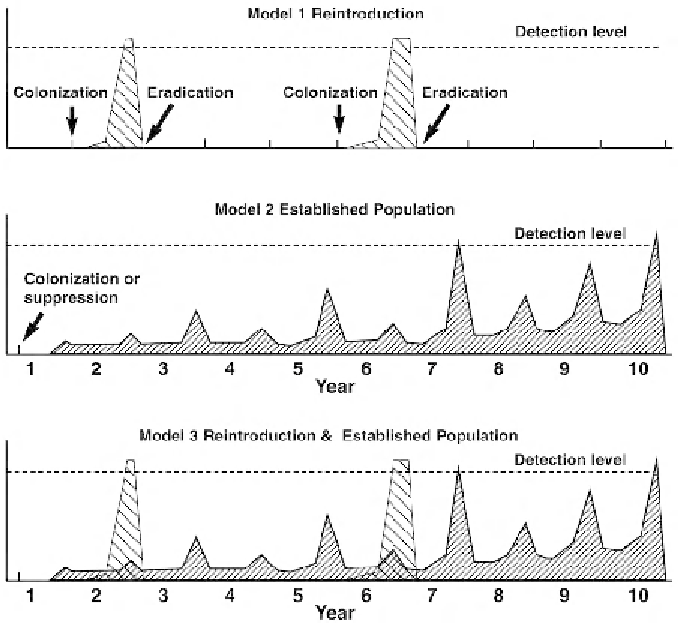Biology Reference
In-Depth Information
Figure 13.4
The top two models represent the alternative hypotheses for the presence of Medfly
populations in California in the 1990s. The lowest “combination” model illustrates a situation in
which both establishment and reintroductions are occurring. A more-complex situation similar to
this “combination model” appears consistent with the molecular data. The top two models were
redrawn from
Carey (1991)
.
Molecular methods were used in attempts to answer three questions: Are spe-
cies-specific diagnostics useful for ecological studies and quarantine procedures?
What is the colonization history and population structure of Medflies as they
moved out of Africa and into California? And, is the Medfly permanently estab-
lished in the Los Angeles basin?
13.7.4.2 Species-Specific Diagnostics
An important component in dealing with invasion problems is to be able to
rapidly and reliably identify the introduced species. Within the Diptera, the
Tephritidae contains many important agricultural pests. Of the
>
4000 species
of tephritids found in infested fruits, 250 are considered pests (
Armstrong et al.
1997
). Unfortunately, it is difficult to identify immature tephritids to species, so

